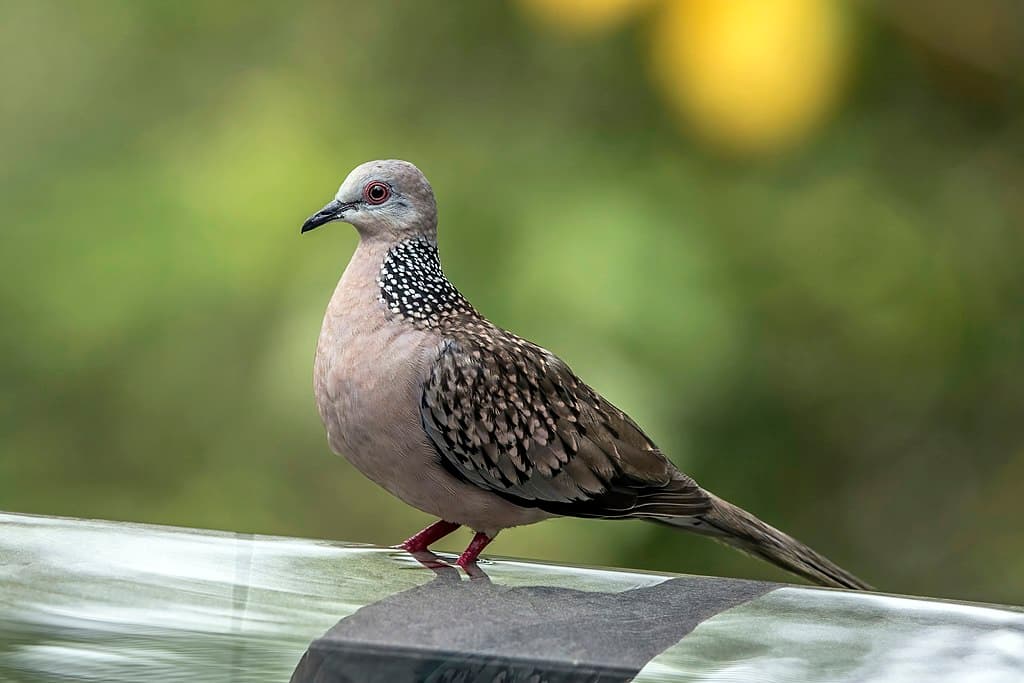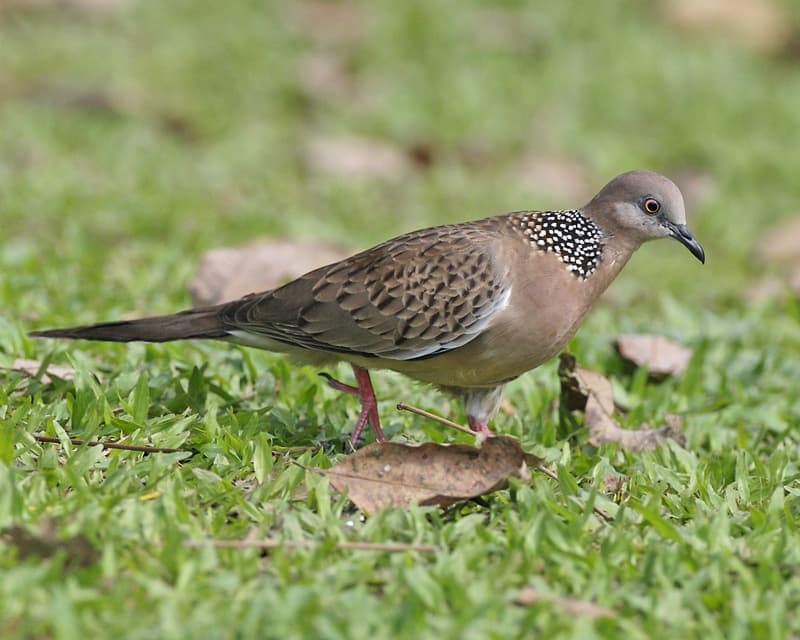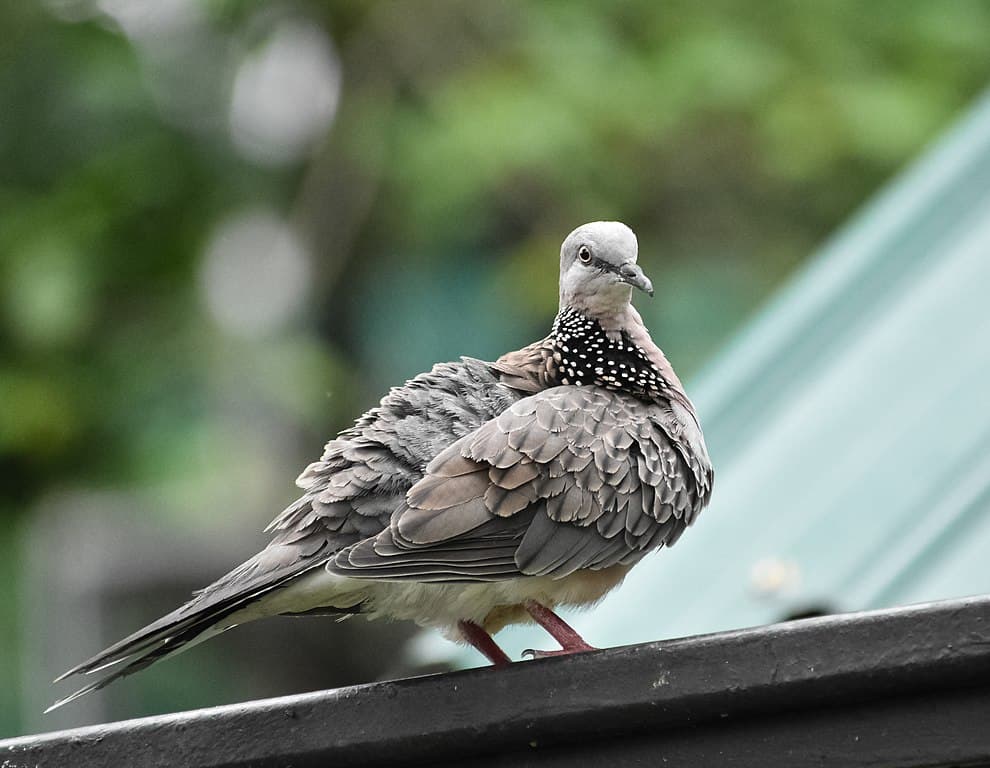Spotted dove (លលកបាយ) is a small pigeon native to the Indian subcontinent and Southeast Asia. We know a lot about doves but not the specific species, especially spotted doves. All the more reasons for me to bring them into the topic today for you to find out below. As per usual, there will be some facts and information about spotted doves so let’s take a look.
Appearance

Spotted dove is a small bird that is from 28 to 32 centimeters long, including the tail. It is a long and slim bird with a rosy buff below that shades into gray on the head and belly. This small bird also has a half collar on the back and sides of the neck made of black feathers. As for the wing feathers, they are dark brown with gray edges while the center of the abdomen and vent are white. Spotted doves have long tails and the outer tail feathers have white tips.
Behavior

Male and female spotted doves communicate by making “coo-coo-coooo” sound. For males, they use their loud wing flapping to fight when they defend their territory. These doves mate for life, and they will only move on and find a new mate when one dies. Female spotted doves lay 2 eggs, and both parents take turns incubating the eggs for 13 days before they hatch. The cool part is that doves can produce milk to feed their young which is quite unique.
Feeding & Habitats

Though omnivores, these doves mainly feed on fallen fruits, grains, grass seeds, scrapes, and seeds of other plants. However, they may also take on insects such as winged termites and more. Usually, spotted doves move around in pairs or small groups where they forage on the ground. They walk on the ground and pick up seeds, and they also visit bird feeders sometimes.
Spotted doves are native to Asia with a wide range across Australia, North America, New Zealand, and the UK. They live in various types of habitats such as farmland, gardens, human habitats, scrub, tree groves, and woodland. Apart from these, they also inhabit residential areas, river woods, and parks, especially well-watered areas with lawns and trees.
Related Post: Brown Shrike Facts
